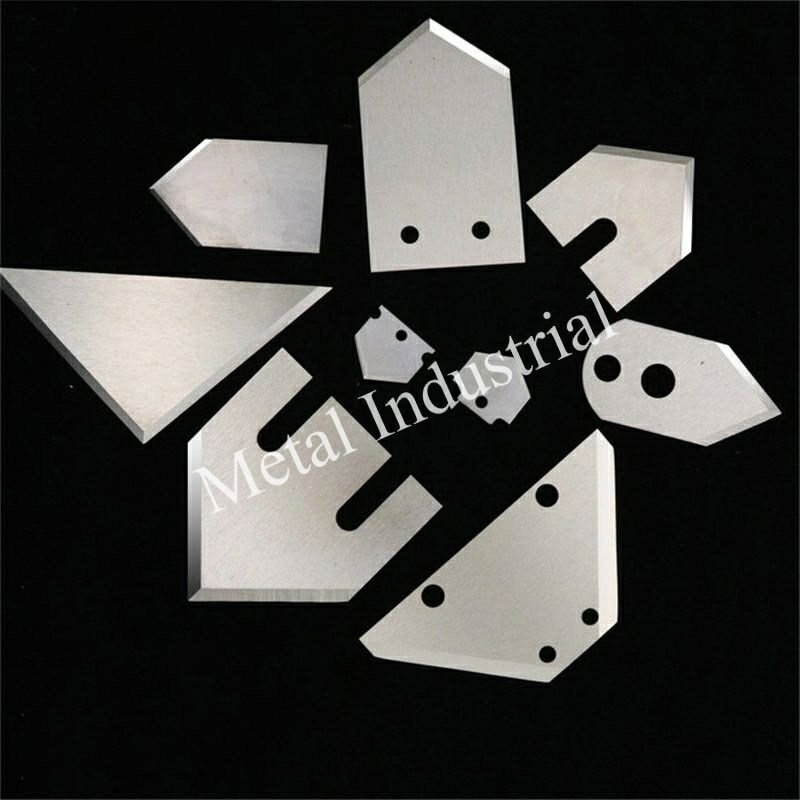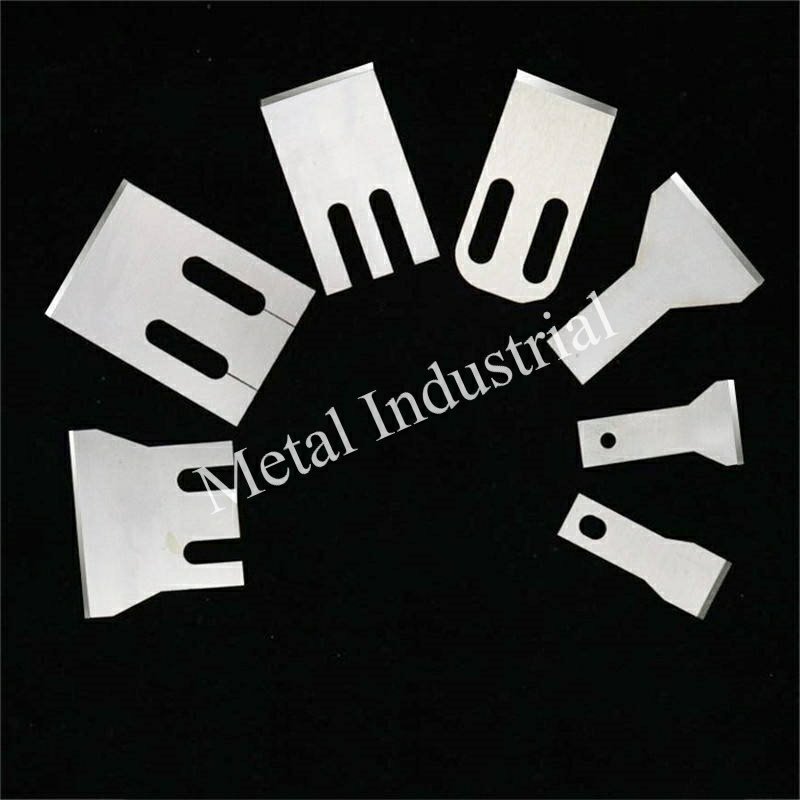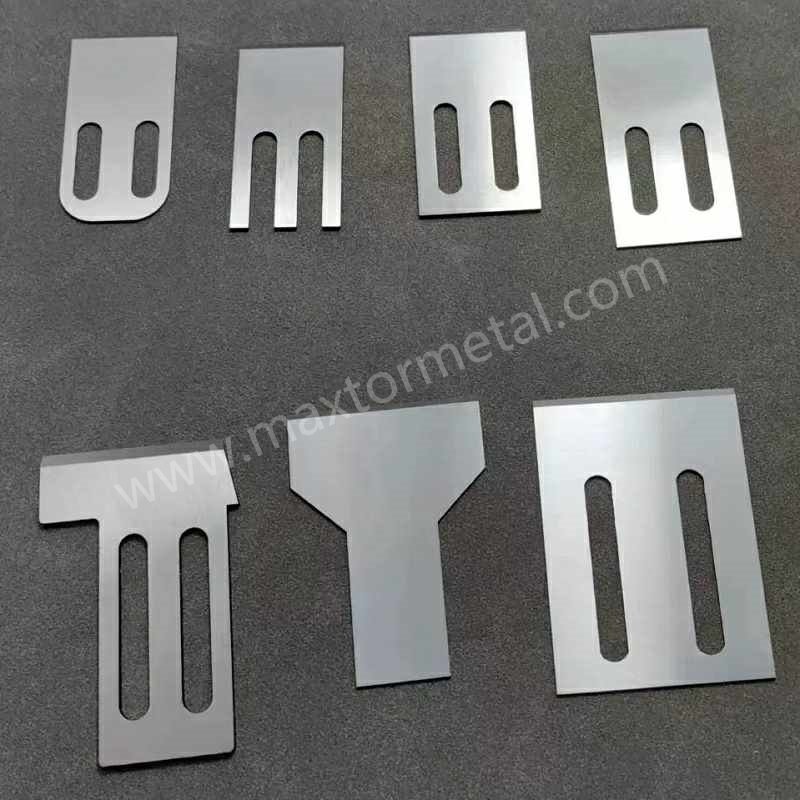
Safe and efficient Schneidklingen für die Granulierdüse replacement requires careful safety steps and regular maintenance. You help your pelletizer perform optimally by watching for signs like increased fines, heavier motor load, or unusual noises. As the pelletizer market grows by 4.5% annually, using high-quality blades ensures you keep up with rising demands. Always choose a custom blade with the proper clearance—0.2 to 0.3 mm—for clean cuts and minimal downtime.
Die wichtigsten Erkenntnisse
- Always wear the right safety gear like cut-resistant gloves, safety glasses, and steel-toed boots before you change blades.
- Follow the lockout/tagout steps to turn off the pelletizer and stop accidents during maintenance.
- Clean and check the die face and blades carefully to find damage and make sure new blades fit well.
- Use custom pelletizer blades for better work, longer use, and to save money over time.
- Check blade alignment and gap (0.2–0.3 mm) often to keep the machine working well and to make good pellets.
Sicherheit und Vorbereitung

PPE and Tools
Required Personal Protective Equipment (PPE)
You need to keep yourself safe before you start. Always put on cut-resistant gloves to protect your hands from sharp edges. Wear safety glasses so nothing gets in your eyes. If you think there will be splashing or dust, use a face shield. Steel-toed boots help protect your feet if you drop something heavy. Wear long sleeves and pants to cover your skin. If it is loud, use hearing protection.
Essential Tools for Blade Replacement
Get all your tools ready before you begin. You will need a torque wrench to tighten things just right. Bring Allen keys or hex wrenches, and a screwdriver. A soft mallet helps you make gentle taps. Use a cleaning brush and lint-free cloths to wipe away dirt. Have a container for old blades and fasteners. Make sure your tools work well and are not broken.
Machine Shutdown
Step-by-Step Shutdown Procedure
You must turn off the pelletizer the right way to stay safe. Follow these steps:
- Find all the energy sources and dangers near the machine.
- Turn off the main power and stop all moving parts.
- Use lockout/tagout devices, not just stop buttons, to cut off energy.
- Put lockout/tagout devices on the right spots.
- Let out or hold any stored energy, like in capacitors.
- Test the machine to make sure it is really off.
- Tell your team so everyone knows the machine is shut down.
Lockout/Tagout (LOTO) Safety Protocol
Lockout/tagout (LOTO) keeps you safe when changing blades. Always use LOTO devices to keep the machine off. Put tags on to show that work is happening. Do not trust interlocks alone. Only trained people should take off LOTO devices after the job.
Area Preparation
Clearing and Cleaning the Work Area
A clean work area helps stop accidents. Pick up all plastic pellets, dust, and trash from the floor and machine. Put tools and supplies away neatly. Keeping things tidy stops slips, trips, and fires.
Identifying and Preventing Common Hazards
Industry reports say fires and explosions can happen during pelletizer maintenance. The table below shows the main hazard types:
| Category | Details |
|---|---|
| Materials involved | Green and dry wood fibre, wood pellets, combustible gases |
| Equipment involved | Pelletizers, dryers, hammer mills, silos, conveyors, dust collectors, coolers |
| Ignition sources | Hot work, mechanical sparks, electrical equipment, smouldering, self-heating, friction |
| Incident types | Fires (pelletizer, silo, dryer), deflagrations, explosions, equipment failures |
You can stop these dangers by keeping dust under control, checking equipment, and training your team. Put in fire alarms and keep the area clear of things that can start fires. Always follow safe steps every time you change blades.
Pelletizer Die Face Blades Replacement Steps
Blade Removal
Step-by-Step Removal Process
You must take out the old blades before putting in new ones. Here are the steps to remove blades safely and quickly: 1. Make sure the pelletizer is off and locked out. 2. Let the die face and blades cool down if they were hot. 3. Use your torque wrench or Allen keys to loosen the bolts. Turn each bolt slowly and evenly. 4. Hold the blade with one hand when you take out the last bolt. This keeps the blade from falling. 5. Lift the blade away from the die face. Put it in a safe container for throwing away or checking.
Tipp: Keep your hands away from sharp edges. Wear cut-resistant gloves to protect yourself.
Common Issues and Solutions During Removal
You might have some problems when taking out the blade. Here are some common issues and how to fix them:
| Ausgabe | Ursache | Lösung |
|---|---|---|
| Blade stuck to die | Residue build-up or corrosion | Tap gently with a soft mallet; use a little penetrating oil if needed. |
| Stripped bolt heads | Over-tightening or worn tools | Use a bolt extractor or get new tools. |
| Blade drops suddenly | Not holding blade during last bolt | Always hold the blade with your hand or use a clamp. |
Inspektion und Reinigung
Inspection Checklist and Cleaning Steps
After you take out the blade, check and clean the die face and mounting area. Use this checklist: – Look for cracks, chips, or uneven wear on the die face. – Check the mounting holes for thread damage or dirt. – Look at the old blade for too much wear or breaks. – Check for residue, plastic build-up, or rust on all surfaces.
To clean the area: 1. Wipe away dust and dirt with a lint-free cloth. 2. Use a cleaning brush to get rid of tough residue. 3. If needed, use a mild solvent that the manufacturer says is safe. 4. Dry everything before putting in the new blade.
Notiz: Clean surfaces help the blade fit right and stop problems with alignment.
Common Issues and Solutions During Inspection/Cleaning
Problems can happen when you check and clean the area. Here are some examples:
| Ausgabe | Ursache | Lösung |
|---|---|---|
| Residue hard to remove | Melted plastic or old grease | Use a plastic scraper or a safe solvent. |
| Threads full of dirt | Not cleaned after last change | Clean threads with a small wire brush. |
| Surface rust | Water exposure | Sand gently with fine paper; use rust inhibitor. |
Blade Installation
Schrittweiser Installationsprozess
Now you can put in the new pelletizer die face blades. Follow these steps: 1. Line up the new blade with the holes on the die face. 2. Put the bolts in by hand so you do not cross-thread them. 3. Tighten each bolt a little in a crisscross pattern. 4. Use a torque wrench to tighten bolts to the right torque. 5. Make sure the blade sits flat against the die face with no gaps.
Safety Check: Make sure all bolts are tight and the blade moves if it needs to.
Common Issues and Solutions During Installation
You may run into these problems when putting in the blade:
| Ausgabe | Ursache | Lösung |
|---|---|---|
| Blade does not fit | Wrong blade size or not lined up | Check the part number and make sure it is the right blade. |
| Bolts will not tighten | Cross-threading or dirt | Take out bolts, clean threads, and try again. |
| Blade sits unevenly | Dirt or damage on mounting surface | Clean the surface again and check for damage. |
Alignment and Test Run
Alignment Procedure and Test Run Steps
Good alignment helps the machine work well and makes blades last longer. Here is how to line up and test the new blade: 1. Turn the die face by hand to check the blade gap. 2. Measure the space between the blade and die face. Set it to 0.2–0.3 mm. 3. Make sure the blade does not touch or drag on the die face. 4. Take away all tools and cleaning stuff from the area. 5. Remove lockout/tagout devices and turn the power back on. 6. Start the pelletizer at low speed. Listen for strange noises or shaking. 7. Slowly speed up and watch the pellets.
Profi-Tipp: Stop the machine right away if you hear scraping or see uneven pellets. Check the alignment and gap again.
Common Issues and Solutions During Alignment/Test Run
You might see problems during alignment or the test run. Here is how to fix them:
| Ausgabe | Ursache | Lösung |
|---|---|---|
| Strange noise or shaking | Bad alignment or loose bolts | Stop the machine, check alignment, and tighten bolts. |
| Pellets are not even | Wrong blade gap | Set the gap to 0.2–0.3 mm. |
| Blade touches die face | Gap is too small | Loosen bolts, move blade, and tighten again. |
Always follow the manufacturer’s instructions for die and blade replacement. Doing each step carefully helps you stay safe and get good results.
Custom Pelletizer Die Face Blades

Vorteile der Anpassung
Enhanced Performance and Efficiency
Custom pelletizer blades help you make more pellets. They also help you make better quality pellets. You can pick the blade shape and material that fits your job. This helps you get pellets that look the same and waste less material. Studies show that if you control things like particle size and machine speed, you get stronger pellets and more of them. Custom blades let you choose what works best for your raw materials and your goals.
Increased Durability and Lifespan
Custom blades last longer because they use special materials and coatings. Some have tungsten carbide or ceramic coatings to stop them from wearing out fast. These blades stay sharp longer. You will not need to change them as often. This saves you time and money on repairs.
Precise Fit for Specific Machines
Custom blades fit your pelletizer just right. This helps the machine run smoothly and cuts down on shaking. A good fit also stops problems like uneven cuts or blades not lining up.
Cost-Effectiveness Over Time
Custom blades might cost more at first. But you save money later because they last longer. They can last up to three times longer than regular blades. You also spend less time fixing your machine. The table below shows how custom blades are better than standard blades:
| Performance Aspect | Custom Pelletizer Blades | Standardklingen |
|---|---|---|
| Klingenlebensdauer | Up to 3 times longer due to advanced materials/coatings | Standard steel, shorter lifespan |
| Cutting Consistency | Higher, resulting in better pellet uniformity | Lower consistency |
| Durchsatz | Higher throughput; example: 200 tons recycled pellets/month | Geringerer Durchsatz |
| Raw Material Savings | Up to 35% savings reported by a furniture company in China | Less efficient, more waste |
| Revenue Impact | $1.2 million additional annual revenue (case example) | No comparable increase |
| Wartungshäufigkeit | Less frequent due to durability and better fit | More frequent blade changes and repairs |
| Kosteneffizienz | Better due to longer life and less downtime | Higher operational costs |
Improved Maintenance and Safety
Custom blades are easier to put in and take out. This makes it safer for workers. It also helps keep the pelletizer working well.
Nanjing Metal-Lösungen
Nanjing Metal Industrial CO., Limited is a top maker of pelletizer die face blades. They have been making blades for over 20 years. The company has ISO certification, so you know their products are good. Their team has both experienced and young engineers who work hard to make great blades. Nanjing Metal lets you order custom blades that fit your needs.
They check quality at every step, from checking materials to the final product. They use strong materials like SK2, HSS, M2, and SKD11. They also use special heat treatments like quenching, tempering, and sub-zero treatment. These steps make the blades very hard, with a hardness of HRC 52 to 65. This helps the blades last up to 60% longer. You can also get coatings like chromium plating or titanium nitride to make the blades even better.
Nanjing Metal’s custom blades work for many jobs, like plastic recycling and masterbatch production. You can trust their knowledge and get updates on your order. If you want to know more or need a special blade, you can Kontakt their sales engineers.
Die Maintenance and Best Practices

Routine Inspection
Key Inspection Points for Blade Mounting Area
You should check many parts during die maintenance. Look at the blade root, platform, trailing edge, blade tip, leading edge, airfoil, and platform radius. Clean blades make it easier to see problems. Research shows clean blades help you find issues three times more often than dirty ones. Always wipe away dust and residue before checking. This helps you spot cracks, nicks, or other damage that could hurt how the machine works.
Signs of Wear, Cracks, or Loosening in Blade Seats
Check for grooves, chips, or uneven wear on blade seats. Watch for cracks or if the blade is not tight. If you see loose bolts or moving parts, stop and fix them right away. Missing these problems can cause bigger failures and cost you time and money. Checking the die often helps you find these problems early.
Reinigung und Schmierung
Cleaning Procedures for Blade and Die Contact Surfaces
After each use, clean the die and blade contact areas. Use a lint-free cloth to remove dust and plastic bits. Check for leftover material before starting the machine again. Cleaning well stops contamination and keeps your machine working well.
Lubrication Tips for Blade Mounting and Moving Parts
Put the right lubricant on moving parts and blade mounts. Never use bottles without labels. Always look for leaks or drips when the machine is running. Set a schedule for adding lubricant based on how much you use the machine.
Preventing Contamination During Maintenance
Keep your work area tidy. Wear clean clothes and close doors to keep out dust and bugs. Store lubricants in containers with labels. Bad cleaning habits can cause contamination, which can harm your blades and die. Good maintenance routines help you avoid these problems.
Fehlerbehebung
Common Issues After Blade Replacement (e.g., Improper Installation, Unusual Noises, Uneven Cutting)
You might hear strange sounds, see uneven pellets, or feel shaking after changing blades. These problems usually happen because of bad installation, loose bolts, or the wrong blade gap.
Solutions and Preventive Measures for Blade-Related Problems
Check if everything lines up and tighten all bolts. Set the blade gap to the right size. Follow the maker’s instructions for every step. Keep a checklist for die maintenance. Research shows good die maintenance can make dies last longer and cut costs by up to 90%. Regular checks and care keep your machine working well.
Need expert advice or custom solutions? Reach out to contact Nanjing Metal’s sales engineers for support.
If you follow each step, you can change pelletizer die face blades safely and quickly. Doing regular maintenance and using custom blades helps your machine work well and not stop often. Experts say you should do these things:
- Check blades and other parts for any damage or wear.
- Change broken or old parts right away to keep the machine working well.
- Always use safety rules and listen to what the maker says.
- Teach your team what to do and have extra parts ready.
- Ask for help from experts if the job is hard.
Häufig gestellte Fragen
How often should you replace pelletizer die face blades?
Check the blades after each production run. Replace them if you see chips, cracks, or uneven wear. Checking often helps stop machine problems and keeps pellets good.
What is the correct blade gap for efficient pelletizing?
Set the blade gap from 0.2 to 0.3 mm. This gap helps make clean cuts and lowers fines. Always check the gap before you start the machine.
Can you use standard blades on all pelletizer machines?
No, you need blades made for your machine. Custom blades fit better and last longer. Using the wrong blade can make uneven pellets and hurt the machine.
How do you prevent contamination during blade replacement?
Keep your work area neat and clean. Use lint-free cloths and put lubricants in labeled containers. Always wear clean gloves and close doors to keep out dust.
Siehe auch
Finden Sie die perfekten Granuliermesser für Ihre Kunststoffverarbeitungsanforderungen
Granuliermesser im Vergleich: Finden Sie leicht die richtige Passform
Was sind Granuliermesser und wie funktionieren sie in der Industrie?
So wählen Sie das richtige Pelletiermesser für Ihre Branche aus
Umfassender Leitfaden zur Auswahl des besten Granuliermessers für Ihre Maschine


